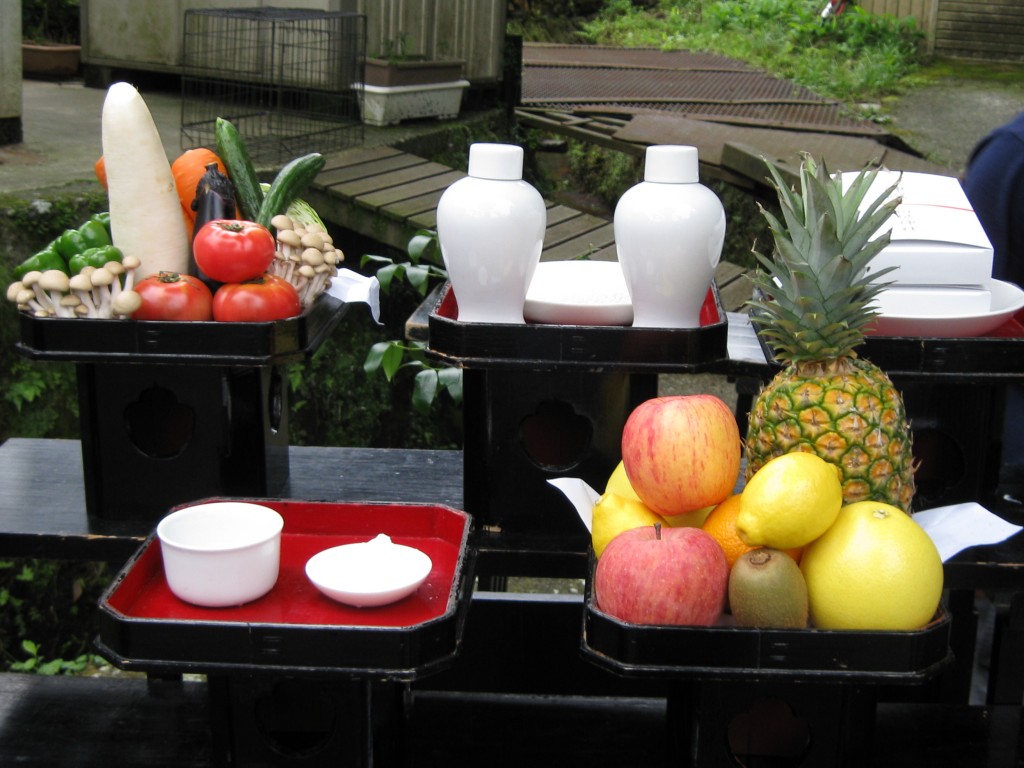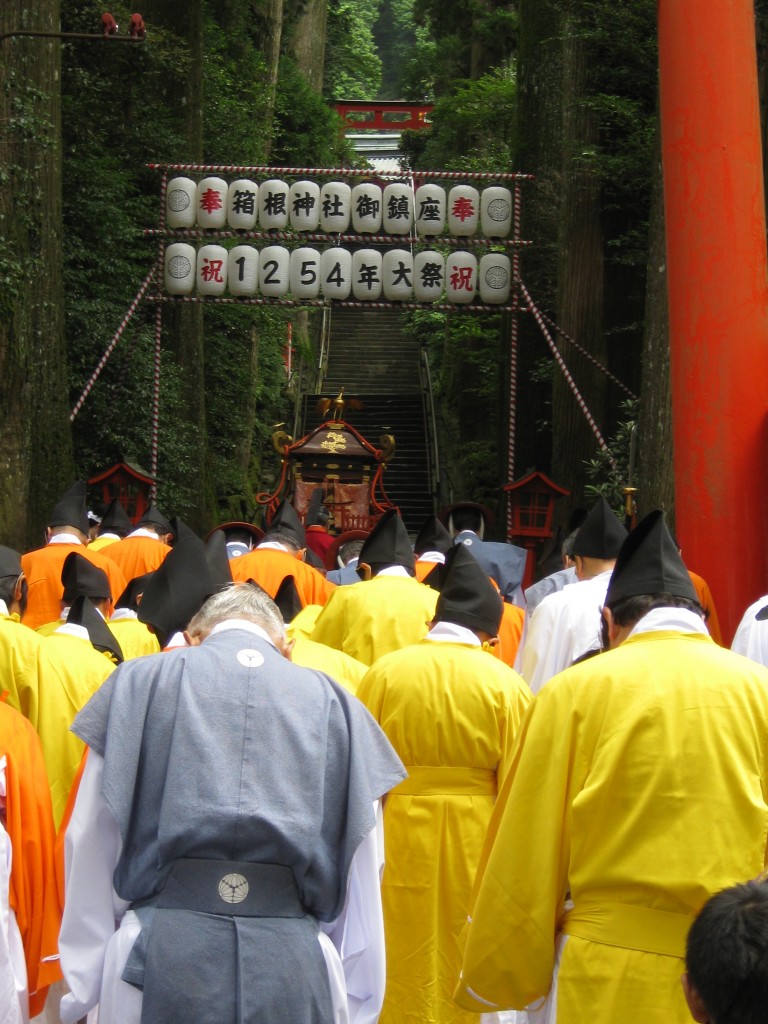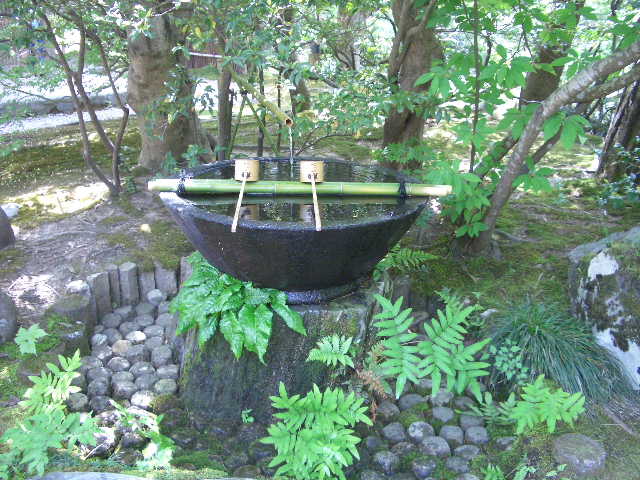
Offerings can be visually appealing
One of the aspects of Shinto which isn’t fully acknowledged is its contribution to Japanese aesthetics. The attention to detail, the concern with appearance, and the cultivation of elegance are all notable traits. Rituals are carefully choreographed and the colours of costumes – in keeping with Heian ideals – are often striking.
Shinto architecture epitomises the harmony of human and nature which characterised traditional Japan. The craftsmanship in the woodwork and roofing of the shrines can be impressive. The use of natural materials and simple, clear lines have a pleasing quality which gives expression to the sense of purity that is so important to Shinto. Transience and renewal are built into the very fabric of the buildings.
“Beauty, stability, reciprocity, elegance and mutual respect: for the Japanese, these are the goals of life,” writes anthropologist Alan MacFarlane in Japan through the Looking Glass. The values surely stem from Shinto.
In the pursuit of beauty lies an emphasis on form, which is such a vital feature of Japanese life, even today. ‘Religious values and aesthetic values are not two different things,’ says Kishimoto Hideo: ‘Ultimately, they are one for the Japanese.’ Shinto is a case in point!

Positioning, colour and surrounds have all been carefully considered here.

An elegant modern water basin, harmonising with nature

Leave a Reply